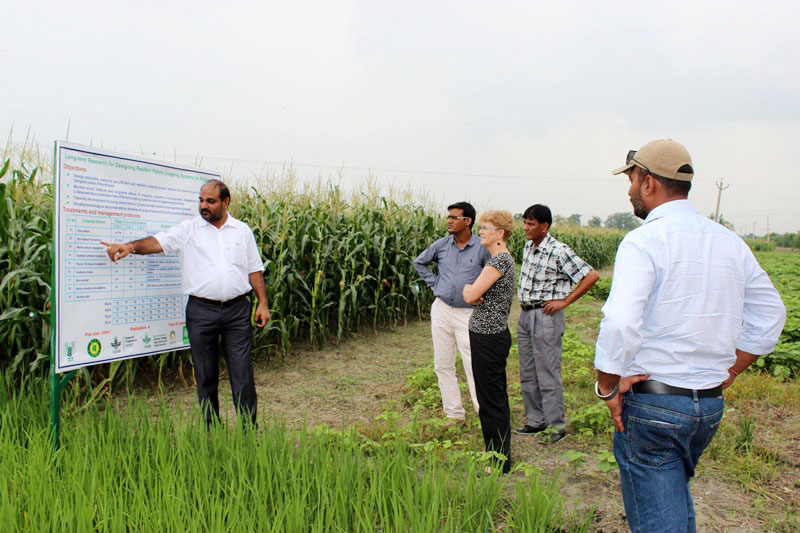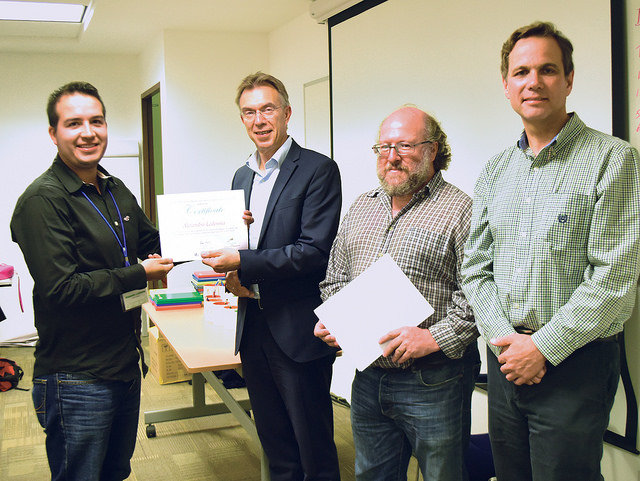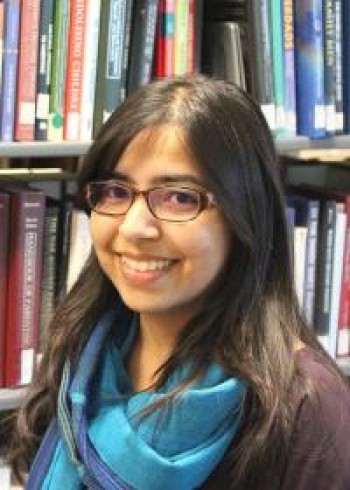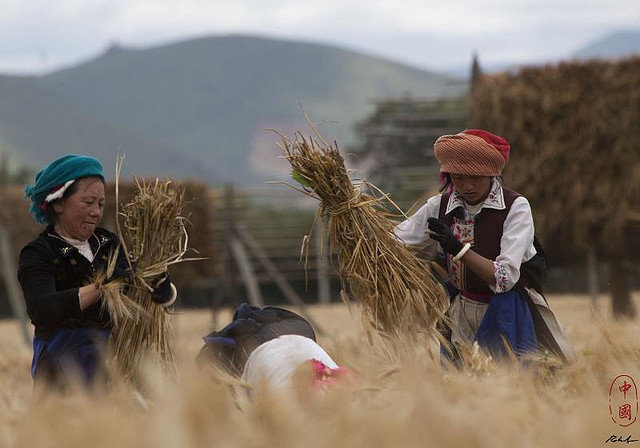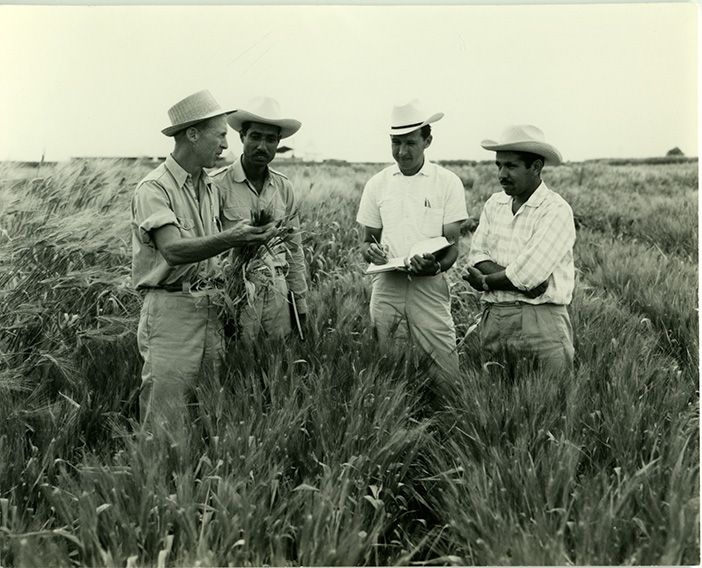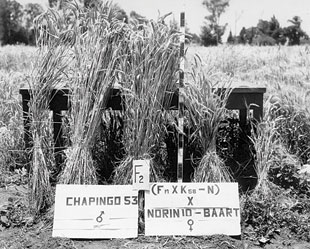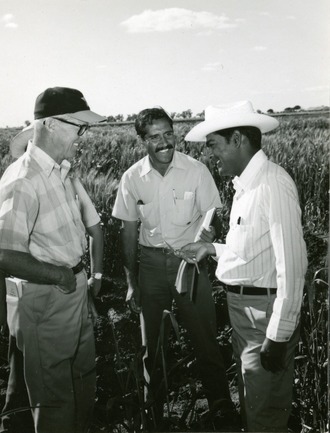At 50-year mark, CIMMYT scientists strive for gender equity
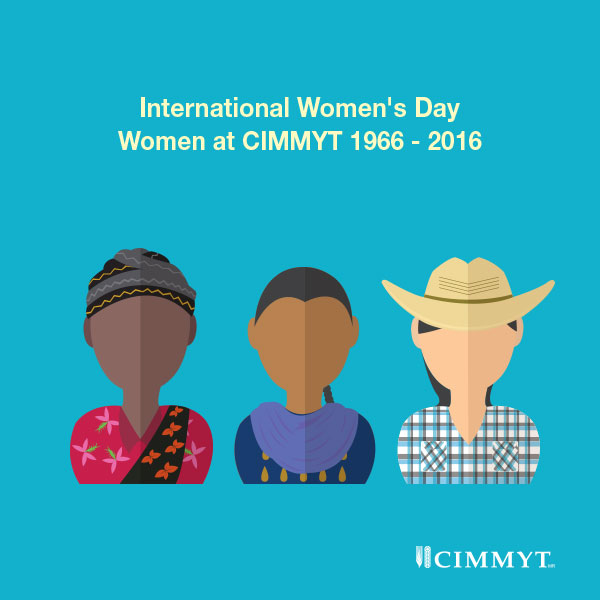
This story is one in a series of features written during CIMMYT’s 50th anniversary year to highlight significant advancements in maize and wheat research between 1966 and 2016.
EL BATAN, Mexico (CIMMYT) – The International Maize and Wheat Improvement Center (CIMMYT) stepped onto the global stage during the “Swinging Sixties.” The decade was defined by social upheaval dominated by left-right political tensions provoked in large measure by Cold War rivalries between the United States and the former Soviet Union.
It was 1966 when Mexico’s Office of Special Studies, formed in the 1940s as an agency of the country’s Ministry of Agriculture and Livestock in partnership with the Rockefeller Foundation to improve bean, maize, potatoes and wheat crops, became CIMMYT.
That same year, civil war exploded in Chad, China’s cultural revolution began, Indira Gandhi became India’s first woman prime minister and musician John Lennon met his future wife Yoko Ono. In the United States, the feminist National Organization for Women (NOW) was formed. Throughout the decade, as the Vietnam War rumbled and more than 30 countries declared independence in Africa, women in many developing countries struggled to gain basic human rights, including the chance to vote.
In wealthy western nations, the “Women’s Liberation Movement,” ultimately known as second-wave feminism, emerged, supplanting women’s suffrage movements and deepening debates over women’s rights.
At CIMMYT, efforts to meet agricultural needs of women farmers and those in charge of nutritional wellbeing within the household to bolster global food security took shape.
Women make up 43 percent of the agricultural labor force in developing countries, according to the U.N. Food and Agriculture Organization (FAO). However, rural women suffer systematic discrimination with regard to their ability to access resources for agricultural production and socio-economic development.
Now referred to as “gender issues” and “gender relations,” debates over how to address inequity on farms and in the workplace are ongoing at CIMMYT. Rather than focusing specifically on women’s rights, gender studies focus on how notions of women or men are determined through characteristics societies attribute to each sex. Gender relations consider how a given society defines rights, responsibilities, identities and relationships between men and women.
As staple foods, maize and wheat provide vital nutrients and health benefits, making up close to one-quarter of the world’s daily energy intake, and contributing 27 percent of the total calories in the diets of people living in developing countries, according to FAO.
Globally, if women had the same access to agricultural production resources as men, they could increase crop yields by up to 30 percent, which would raise total agricultural output in developing countries by as much as 4 percent, reducing the number of hungry people by up to 150 million or 17 percent, FAO statistics show.
SCIENTIFIC CONTRIBUTIONS
From the outset, women scientists played a key role as maize and wheat researchers at CIMMYT.
Evangelina Villegas, who in 2000 became the first woman to win the World Food Prize, joined CIMMYT in 1967. She shared the prestigious award with CIMMYT colleague Surinder Vasal for efforts and achievements in breeding and advancing quality protein maize to improve productivity and nutrition in malnourished and impoverished areas worldwide.
Maize scientist Marianne Bänziger joined CIMMYT in 1992. When she was transferred to Zimbabwe in 1996 to lead the Southern African Drought and Low Soil Fertility Project (SADLF), she became the first woman scientist at CIMMYT posted to a regional office.
“In the good old days, women scientists were considered an oddity – women were considered something special, even though a scientist like Eva Villegas was very well integrated into CIMMYT,” said Bänziger, who now serves as CIMMYT’s deputy director general.
Bänziger’s work was centered on eastern and southern Africa, where the livelihoods of about 25 million people depend directly on agriculture and maize is the staple crop of choice. Drought and poor soil quality often erode food security and increase socio-economic pressures in the region.
Bänziger became known as “Mama Mahindi,” Swahili for “Mother Maize,” for her work developing stress-tolerant maize and for fostering the widespread access of seed producers and farmers to improved drought-tolerant maize now grown by at least 2 million households.
Denise Costich manages the world’s biggest maize gene bank at CIMMYT headquarters near Mexico City. She joined CIMMYT to work closely with farmers. She now holds farmer field days to help improve seed distribution. Her aims include understanding how best to move genetic resources from gene bank to field through breeding, so they become products that help improve food security.
“I was always encouraged to go as far as I could,” Costich said. “The way I prove that women can be scientists is by being a scientist. Let me get out there and do what I can do and not spend a lot of time talking about it.”
Wheat physiologist Gemma Molero spent two years inventing a hand-held tool for measuring spike photosynthesis, an important part of the strategy for developing a high-yielding plant ideotype. Now, Bayer Crop Science is interested in joining a collaborative project with CIMMYT, which will focus around use of the new technology.
Wheat scientist Carolina Saint Pierre has made important contributions towards obtaining the first permits for growing genetically modified wheat in open field trials in Mexico. The trials have allowed the identification of best-performing genetically modified wheat under water stress and helped understand the genetic control of physiological mechanisms related to drought.
WORKPLACE EQUITY
Despite a daycare at headquarters and other efforts to encourage gender equity, women scientists at CIMMYT continue to face different burdens than men in maintaining a work-life balance.
“Whether you are a western woman in a white-collar job worrying about a daycare or a woman farmer in a developing country worrying about her aging parents, women have a different level of responsibility,” said Jenny Nelson, manager of the Global Wheat Program.
A lot of women drop out of agricultural science after earning their doctoral degrees once they have a family, said Costich, acknowledging a challenge many women working in agricultural science face related to long hours and travel requirements.
“As a young woman I have to work very hard – I have to work even harder than men in the field to demonstrate my abilities and gain respect,” Molero said.
Overall, economists concur that gender inequity and social disparities have a negative impact on economic growth, development, food security and nutrition.
Through various projects, CIMMYT aims to address the challenges of gender equity to improve development potential. For example, CIMMYT researchers are among the leaders of a global push to encode gender into agricultural research in tandem with other international research partnerships.
In more than 125 agricultural communities in 26 countries, a field study of gender norms and agricultural innovation, known as “Gennovate,” is underway. The aim is to help spur a transformation in the way gender is included in agricultural research for development. Gennovate focuses on understanding how gender norms influence the ability of people to access, try out, adopt or adapt new agricultural technology.
